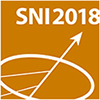Speaker
Description
Modern X-ray sources such as synchrotrons and free-electron lasers provide the possibility of ultra-fast data recording within micro-seconds. Small angle X-ray scattering (SAXS) on biological macromolecules is one tool for exploring the kinetic and dynamic of structural alteration of proteins during the working cycle. Advanced sample environments based on microfluidic devices allows handling sample volumes of several pico-liters. For instance fast mixing of liquids is used for time resolved scattering experiments. While such techniques allow analyzing the kinetics of chemical or biochemical reactions, need investigations on the dynamics of a system a more sophisticated approach.
Classical pump-probe experiments facilitates the analysis of reaction dynamics. For these investigations, for instance an ultra-short laser pulse is triggering the reaction in the sample. The high flux synchrotron beam is used for investigated the structural response of the system.
Proteins are expected to exhibit functionally relevant, global domain and sub domain collective modes in the terahertz (THz) frequency range. These normal modes can be triggered by THz radiation. The redistribution of vibrational modes translates into movements and rearrangement of large protein domains in the range up to nm. Such experiments need, beside the brilliance of the X-ray beam suitable fast detector system for recording the data in short time frames.

